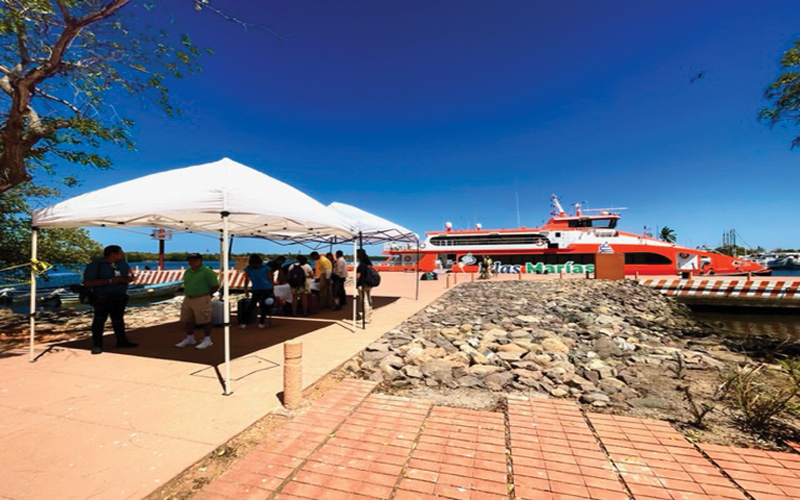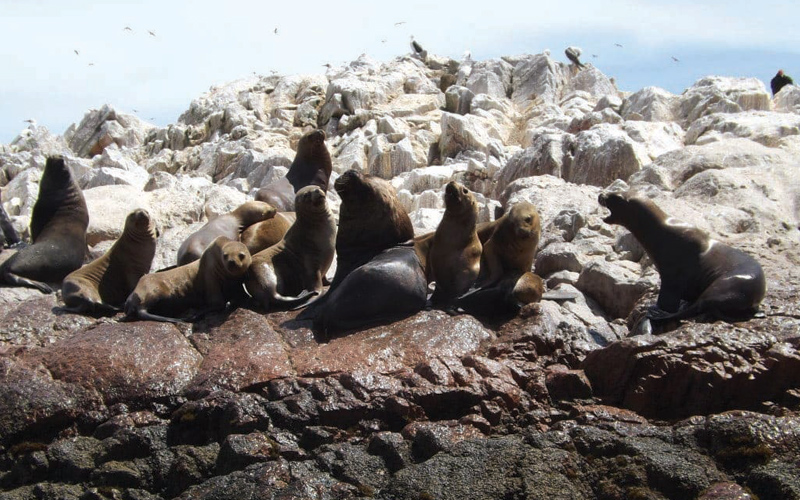Mexico’s Alcatraz is now its Newest Tourist Attraction
New travel destinations are rarely found anywhere in the world.

But in the Pacific Ocean, off Mexico’s west coast, a former penal colony is now a sustainable tourist site.
The Islas Marias, also known as Las Tres Marias, take their names from women of the Bible. Maria Magdalena, Maria Madre and Maria Cleofas are joined by tiny Isla San Juanito in the modest archipelago. Seventy miles off the coast of the ecologically progressive state of Nayarit, they have been a protected biosphere reserve since 2000. UNESCO designated the islands a World Heritage Site in 2010, and they have been open to travelers since December 2022.
A little History
The Marias were discovered in 1532 by Spanish explorer Diego Hurtado de Mendoza, who named them Islas Magdalenas. Little attention was paid them until 1905, when the Mexican government, under President Porfirio Diaz, bought the islands to create a penal colony.
For most of the next century, Isla Maria Magdalena was a place of detention, void of high walls, for mainly low-risk inmates such as political prisoners. The goal was to rehabilitate and reintegrate these criminals back into society. Indeed, beginning in 1939, the government authorized prisoners to live on the island with their families. As there was no way to leave, it became known as “Mexico’s Alcatraz.”
Neighboring Isla Maria Madre became as a place of detention for hardened criminals, including El Sapo, “The Toad,” a notorious inmate who claimed to have murdered more than 100 people. In 2009, Maria Madre was upgraded to the high-security Laguna del Toro prison and inmates’ semi-freedom came to an end. Four years later — fueled by a lack of water, rotting food and abuse by prison guards — the penitentiary exploded in violence. Eight public officials and 32 inmates were injured, and one correctional officer was killed, in a fierce riot. In the riot’s aftermath, the prison was abandoned.
President Andres Manuel Lopez Obrador closed the Islas Marias Penitentiary Complex in 2019, offering his government’s support in transitioning the islands to a cultural center. Today, excursions to the Islas Marias showcase the archipelago’s history and ít unique eco-culture, a complete tourism experience with low
environmental impact.
Getting There
The Mexican Navy runs the entire operation. From the historic port of San Blas, swift catamarans (holding up to 199 passengers) travel three hours to Puerto Balleto on Maria Madre. Ferries take five hours from Mazatlan, farther north on the Mexican mainland. All-inclusive packages cover three nights of lodging at Hostal, in basic single and double hotel rooms, along with three buffet meals a day at the island’s only restaurant.
Travelers from the U.S. and Canada can reach the Nayarit capital of Tépic via flights through Mexico City. There is also a daily flight from Tijuana to Tépic. An expansion to Tépic Airport is scheduled to open in 2024, allowing direct flights from Mexico’s neighbors to the north. A newly completed super highway reduces driving time from Puerto Vallarta to San Blas to around 2½ hours.
Days of Exploration
As you set foot on Maria Madre, you’ll notice a painted image of legendary South African freedom fighter Nelson Mandela at the island’s central plaza entrance.
Before joining the group outings it’s helpful to visit the José Revueltas cultural center and museum. Revueltas was a political prisoner who lived in the colony longer than any other individual. The museum’s curated exhibit rooms reference more than a century of prison life.
Maria Madre’s highlight is a tour of the former maximum-security prison. Guests glimpse the harsh cells and areas where prisoners slept, ate, showered and worked out. Short side trips take them to the shrimp farm, salt factory and quarry where they toiled long days in forced labor.
At sunrise, you might join friendly, knowledgeable, guides on a 5 a.m. hike up a hill to the island’s Christos Rey (Christ the Redeemer) statue, a fixture in many Latin communities. It takes about an hour. Panoramic views of the Maria Madre coastline from the summit are mesmerizing. On another morning, you can catch the dawn vista from El Faro, the island’s lighthouse.
Stargazers can visit the naval airport’s runway to study the heavens without the interference of urban lights. At the island’s cemetery, roam the headstones of disreputable souls like El Sapo himself. The Temple of Guadalupe, the island’s impressive church, is up the hill from the central plaza. A tranquil half-day’s excursion is Chapingo Beach, where swimmers are protected from wayward sharks by secured netting. Fellow travelers relax in beach hammocks or join groups for volleyball or soccer matches. Guides and lifeguards assure the safety of all.
Visitors can purchase indigenous arts, crafts and jewelry at outdoor stalls manned by N’ayeri, Tepenhuanos, O’dam and Wixariki Indians from the state of Nayarit.
Ecological Significance
Eight million years ago, the Islas Marias shared a single ecosystem with the Mexican mainland, to which they were attached. But the archipelago gradually broke of, with ít flora and fauna developing unique characteristics as they adapted to their new surroundings. Today island denizens are diverse. There are 54 species of protected marine and terrestrial animals, of which 19 are native to these islands. Around 400 species of plants and 200 species of vertebrates have been documented.
In the last three years, marine biologists have discovered over 20 species of sharks, three different sea turtles, 11 types of rays and a thriving coral reef. Many colonies of sea birds use the untouched islands as nesting sites, including the Pacific subtropical blue-footed boobie. Red snapper and tuna thrive in the warm waters, which maintain an average temperature of 85F/29.5C. As of now, however, visitors are not allowed to snorkel or scuba dive.
For more information: http://sistemas.sectur.gob.mx/dgots/-14-guiasturismo/islas-marias-nayarit-ingles.pdf




